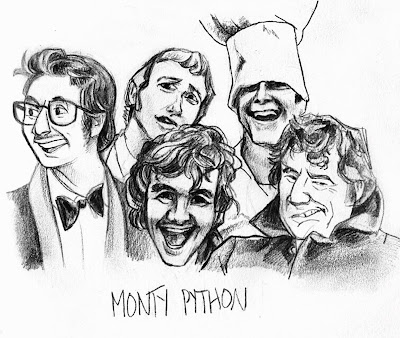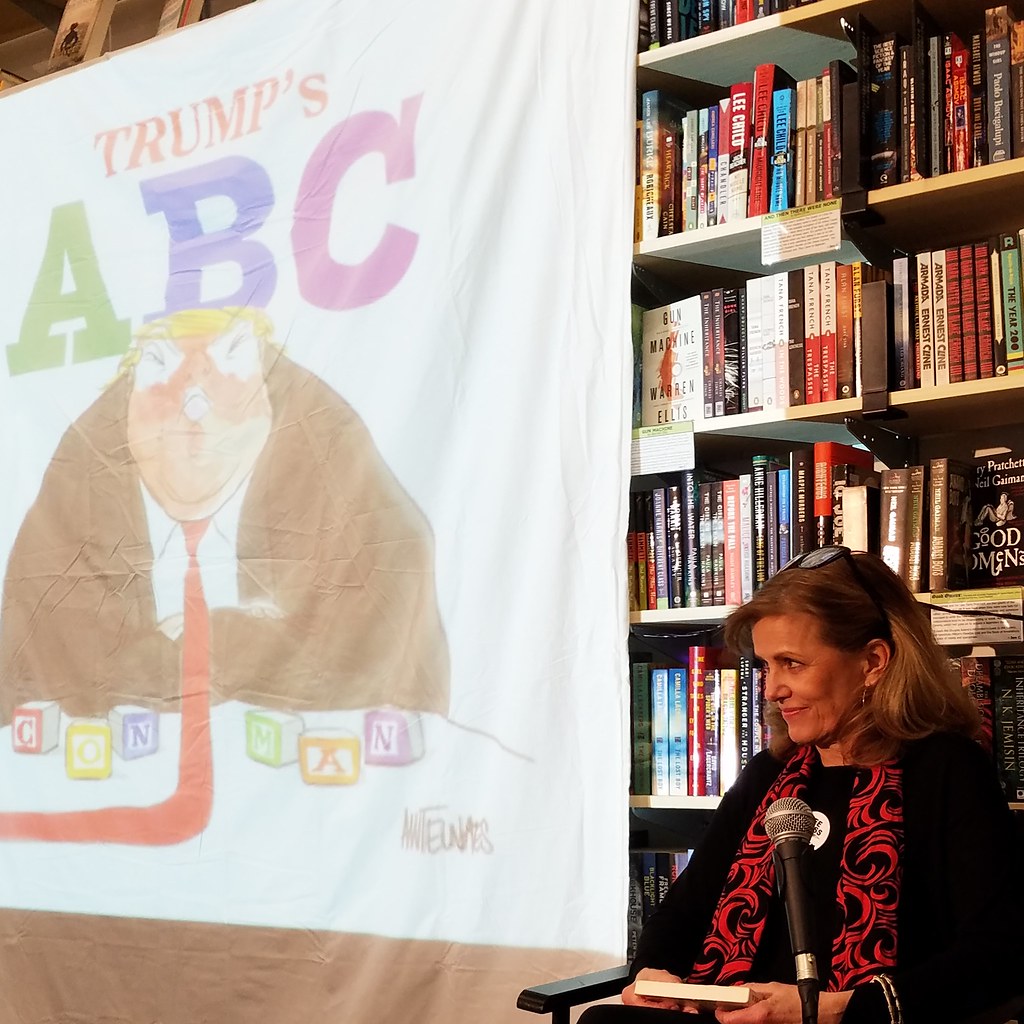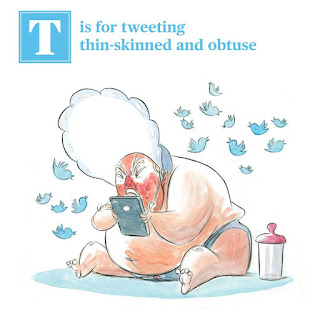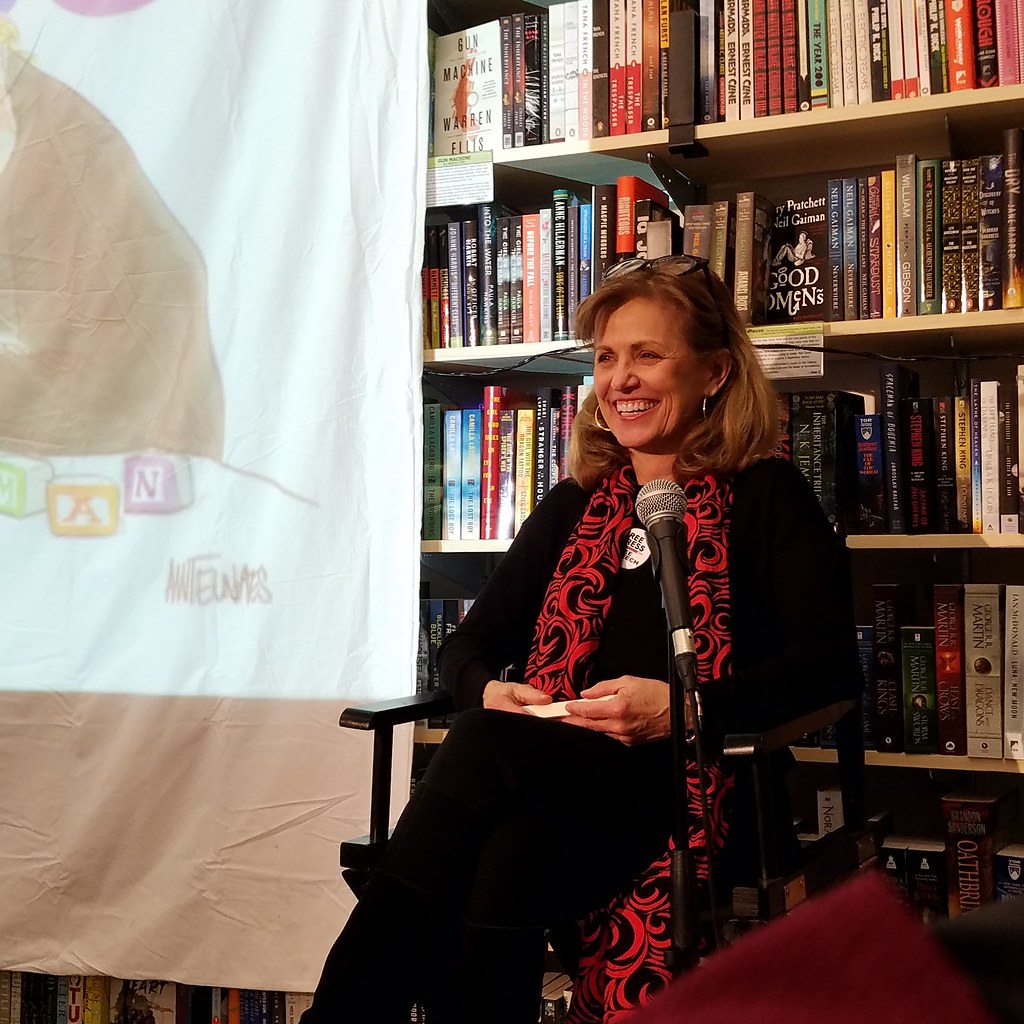by Alexandra Bowman
Ms. Bowman is a 19-year-old student, political cartoonist, and humorist at Georgetown University. We interviewed her last December. When I met her in person last weekend, she told me about a minor university controversy about a pulp paperback book collection in a GU dorm library that had started to go national due to Brietbart picking it up. I offered her space at ComicsDC for her response. For the record, I'm in my mid-50s and grew up with many of the books pictured in the Georgetown Review story around the house, I have read some of them, and I personally do not find them generally offensive myself. However, I do believe that she and her colleagues have a right to make their opinions known without being trolled. And at least one of the books, The Cunning Linguist, is genuinely hardcore pornography. - Mike Rhode
Launched in fall 2019, The Hilltop Show is Georgetown University's political comedy show. Our team aims to make current campus, national, and international events accessible and entertaining to those who might not typically engage with the news - including not only students but the broader Georgetown community and beyond. In line with this mission, we publish journalistic pieces as well as comedic sketches and interviews with political practitioners and comedians.
I founded the show last April. I write sketches and "informational monologues" (the thing John Oliver does), conduct and coordinate journalistic investigations, organize film shoots, edit videos in Adobe Premiere, and conduct outreach and PR for the Show. I create our graphics, drawing many by hand with traditional and digital media, like our Season 2 poster:
I founded the show last April. I write sketches and "informational monologues" (the thing John Oliver does), conduct and coordinate journalistic investigations, organize film shoots, edit videos in Adobe Premiere, and conduct outreach and PR for the Show. I create our graphics, drawing many by hand with traditional and digital media, like our Season 2 poster:
The Hilltop Show meets in a study space in a dorm that would be more accurately described as a glorified broom closet. Until a few weeks ago, the space included a bookshelf, on which were hundreds of books have been there since 2003 when the dorm opened and an alum donated them. During a weekly team meeting, we noticed one book that caught our eye, entitled Cherokee, which depicted a young Native American girl on the cover illustrated not only in an objectifying way but also with blood on her clothes. Upon further inspection, we realized that at least one of the books was hardcore pornography, but many others of them included derogatory racial elements and glamorized rape, including that of underage girls. We asked the university and multiple organizations if they were aware of the books and if they had any background knowledge of their origins, and within hours of one of our emails being sent, every book disappeared from the dorm library.
The Hilltop Show partners with an independent student media publication on campus, The Georgetown Review, and we worked with them to publish a journalistic report based on The Hilltop Show's research and the events that had transpired. The Show also filmed and published a sketch (a Goodfella's parody) on the same day the books were removed.
Shortly thereafter, the university newspaper, The Hoya, published an article that included a statement from me, with some remarks indicated as representative of the team's views and some as my own. As I noted to them, "While some were simply raucous crime noir murder mysteries representative of the literary and cultural time in which they were written, other books included extremely problematic and damaging elements, including the glamorization of rape, including that of underage girls. Completely naked women of all races were frequently featured on these books' covers. Further, many books fetishized young nonwhite women."
The books were typical of the time in which they were written, but our main question was whether the university knew that they were present considering that the books' racist and pornographic content, regardless of when the books where written, could be harmful to those who read them. Several young children under the age of ten live in the buildings where these books were kept, not far out of their reach.
I'd point to how Disney has approached the issue of many of their older films containing culturally outdated and racist elements. On the new streaming service Disney+, films with these elements have warnings in their descriptions. For example, on the 1967 film "The Jungle Book," the following lines are included in the description of the film: "This program is presented as originally created. It may contain outdated cultural depictions." I believe that even a small plaque on the walls of the McCarthy and Reynolds library with a similar sentiment would have been enough. When we reached out to the university, we didn't want the books to ultimately be removed. We wanted them to be contextualized in a similar way to how Disney has handled such content typical of mid-20th century media.
Conservative higher education news site The College Fix published a laughably biased article, which was not based in fact nor particularly concerned with providing much context for the situation whatsoever. Breitbart apparently then noticed this article and then wrote one of their own based on the College Fix's report.
I'd point to how Disney has approached the issue of many of their older films containing culturally outdated and racist elements. On the new streaming service Disney+, films with these elements have warnings in their descriptions. For example, on the 1967 film "The Jungle Book," the following lines are included in the description of the film: "This program is presented as originally created. It may contain outdated cultural depictions." I believe that even a small plaque on the walls of the McCarthy and Reynolds library with a similar sentiment would have been enough. When we reached out to the university, we didn't want the books to ultimately be removed. We wanted them to be contextualized in a similar way to how Disney has handled such content typical of mid-20th century media.
Conservative higher education news site The College Fix published a laughably biased article, which was not based in fact nor particularly concerned with providing much context for the situation whatsoever. Breitbart apparently then noticed this article and then wrote one of their own based on the College Fix's report.
Breitbart reported the story in a way that suits the narratives popular with their reader base. Their report paints the story thus: liberal snowflake college students complained when something offended them, and the university folded and banned the books those students whined about. The image accompanying the article, a photo of books engulfed in flame, has prompted thousands of commenters to compare what we did - which was to raise questions to the university regarding the presence of dime novels that glamorize rape and pedophilia - to Nazi book burnings.
Brietbart's article has been shared over 38,500 times as of February 20th. Over 11,000 comments have been left.
The Hilltop Show has released a statement via a tweet commenting on the Breitbart article:
"First, we didn't want the books removed altogether. We wanted them contextualized. Censorship? Nope. Second, if you're a fan of keeping books around that glamorize rape and pedophilia, we have Some Concerns. Something tells us you didn't read @thegureview's actual report."
"First, we didn't want the books removed altogether. We wanted them contextualized. Censorship? Nope. Second, if you're a fan of keeping books around that glamorize rape and pedophilia, we have Some Concerns. Something tells us you didn't read @thegureview's actual report."
I'd like to conclude by saying that we are more entertained by our Breitbart callout by anything else. After all, Breitbart has now called the Hilltop Show a "crack research team." Rest assured that "Crack Research Team Member" T-shirts are currently being designed. Cheers.
More information about The Hilltop Show can be found on our website, hilltopshow.com where you can also sign up for our newsletter. Our YouTube channel is linked here. We post updates, political cartoons, memes, and more on our social media pages: we are @hilltopshow on Instagram, Facebook, and Twitter. As our slogan states, we will continue to #capitalizeonthechaos.











































